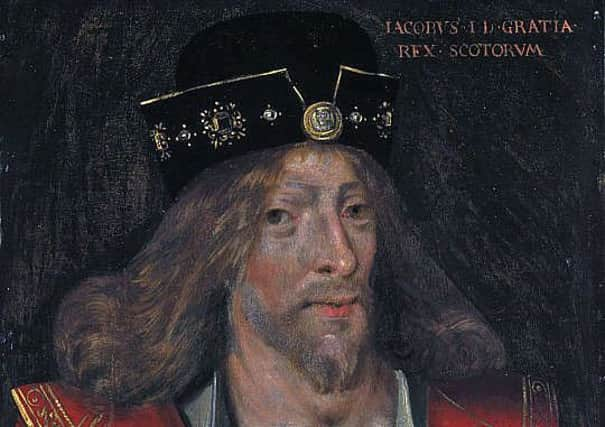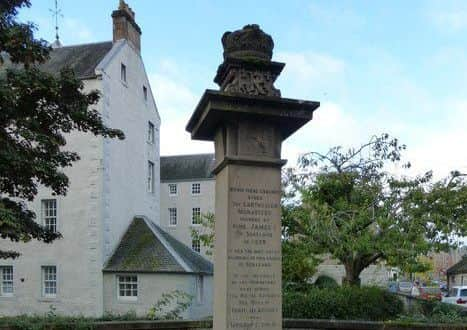Search for lost Scots royal tomb begins in Perth


The Stewart king was brutally murdered by a gang led by Sir Robert Graham on February 21, 1437, while staying at the Blackfriars monastery in Perth, as part of a conspiracy to seize the throne of Scotland.
Tradition dictates that James tried to flee his assassins by climbing through a sewer tunnel - only to discover it had been blocked to prevent tennis balls being lost from a nearby court.
Advertisement
Hide AdAdvertisement
Hide AdNow a major heritage project has been launched on the anniversary of the king’s death to locate and then recreate his final resting place.


James was buried at the Charterhouse in Perth, now lost, a religious institution intended to become a royal tomb for the Stewart dynasty.
The University of Stirling, the University of the Highlands and Islands and Glasgow School of Art will work together with local heritage bodies to create an accurate 3D visual representation of the 15th century building.
A public showcase will be held this Saturday at Perth Museum to reveal more details of the ambitious project.
The Charterhouse, sometimes called Perth Priory, was established in 1429 and was Scotland’s only Carthusian monastery.


It was ransacked by Protestant reformers in 1569 and all traces of the building and its gardens had vanished by the 18th century.
Professor Richard Oram of the University of Stirling, the project’s leader, described the Charterhouse was a unique establishment in Scotland.
“James built it to be the spiritual focus of his dynasty and poured huge sums of money into it to create a splendid setting for his tomb,” he said.
Advertisement
Hide AdAdvertisement
Hide Ad“Medieval descriptions speak of the magnificence of the church, but nothing of it remains above ground to be seen today – the whole monastery was plundered and demolished at the Reformation.
“Working with our archaeology colleagues and the wider community in Perth, we aim to locate the Charterhouse buildings and recover as much of their plan as possible to allow us to ‘build’ a virtual reconstruction of the complex and restore the jewel in the crown of the city’s lost medieval heritage.
“Unearthing this almost forgotten building will transform understanding of Perth’s place in James I’s ambitions: locating the royal tombs within the church would be the icing on the cake.”
James’ queen, Joan Beaufort, survived the attack and wreaked a terrifying retribution upon the traitors in one of the most brutal reprisals Scotland had seen.
The couple were were both buried at the Charterhouse, and a century later, the sister of Henry VIII of England, Margaret Tudor, consort of King James IV of Scotland, was also buried here.
Dr Lucy Dean, of the centre for history at the University of the Highlands, said the Charterhouse’s importance reflected Perth’s status as a royal capital in the 15th century.
“In the early fifteenth century, Perth was at the geographical heart of the country, a few miles from the inaugural site of Scottish kings, and the setting for parliaments, exchequers, church courts, royal ceremonial, and a bustling hub for trade in the later fourteenth and early fifteenth centuries,” she said.
“The murder of James I was a pivotal moment that saw a rapid end to Perth’s status.
Advertisement
Hide AdAdvertisement
Hide Ad“The Charterhouse Project will allow the local, national and world communities the opportunity to discover and re-discover the fascinating history of this lost capital through innovative research and delivery methods.
“Moreover, both the research and the products it will produce will offer innovative educational tools and involvement for all levels from primary to high education and beyond.”
The 3D modelling will be carried out by The Glasgow School of Art’s school of simulation and visualisation.
The public will have a chance to learn more about the project through a digital presentation at Perth Museum and Gallery from 10am-noon.
A walking tour of the city from 12.30-2pm) will offer the opportunity to hear about James I’s dreams to make Perth the capital of Scotland.